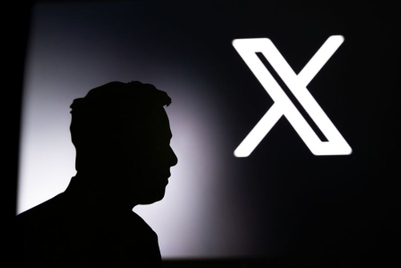_1.png&h=570&w=855&q=100&v=20250320&c=1)
“2024 will be a year defined by disruption, uncertainty, and experimentation,” says WARC’s managing editor, Paul Stringer, as cookies continue to be phased out and measurement techniques take centre stage.
Only half (51%) of marketers are prepared for the depreciation of third-party cookies, according to the latest Future of Measurement report from WARC.
WARC attributes this issue to a lack of education and awareness from marketers around post-cookie alternatives. Stringer says there is evidence that advertisers are “neither fully prepared or aware” of the different solutions available despite the threat of cookie deprecation having been around for some time now.
He added: “Amidst the swirl of excitement around gen AI, another significant inflection point is fast approaching. In Q3 of this year, Google is finally due to phase out third-party cookies.
“With measurement continuing to evolve in several directions at once, marketers find themselves battling multiple headwinds: not only the demise of third-party cookies, but new regulations around sustainability reporting, and, of course, the growing influence and impact of AI. All of which we address in this report.”
Solutions for marketers in a cookieless world
According to the report, only 2% of marketers are using a combination of marketing mix modelling (MMM), attribution, and experiments for measurement; while 22% don’t use modelling at all. The combination of these three solutions can help marketers measure the full impact of their marketing activities, with each of their strengths offsetting one another’s weaknesses.
Attribution is best for short-term impact and is limited to digital channels, but provides real-time insight and is easy to scale. Experiments can be difficult to scale, but it is the “gold standard” for measuring causality. And MMM can provide a long-term view of media impact, but it is expensive and requires a minimum of two years worth of historical data.
Other cookieless solutions that marketers can look at include contextual advertising, identity solutions, first-party data, and Google’s Privacy Sandbox.
The use of artificial intelligence (AI) will also be important for measurement and the report highlights expected growth in the use of synthetic data. A report by Gartner claims that 60% of data used in AI and analytics data this year and the global market for synthetic data generation is expected to grow by 47% between 2023 and 2031 (Straits Research).
While there are benefits to using synthetic data in marketing, including customer journey planning and competitor analysis, marketers need to be careful with the use of AI and implement best practices as generative AI can amplify bias, trigger privacy and data breaches and deliver inaccurate results.
The report highlights that it is important to not overly rely on AI-models for insights and use a hybrid approach, where AI-generated data can be used to augment rather than replace human-based data.
Tim Geenen, CEO and Co-founder, Rayn HQ, said: “There are many benefits to [producing synthetic data], from achieving more accurate results, to building new data sets that reflect our diverse society and opening the door to advanced ways of understanding audiences.”
Another important consideration for marketers will be around sustainability as only 24% of advertisers are currently measuring their digital advertising emissions. However, new regulations coming in Europe and the US this year will mean companies will have to provide more data on their carbon emissions.
According to research by Magna, Lumen, and Adelaide, advertising in high quality media environments with a higher rate of engagement can lead to lower carbon emissions.
Vicky Foster, VP Global Commercial Partnerships, Adform, said: “By working with the right partners, platforms, and practices, ones that have sustainability, transparency, and efficiency at their core and accept no compromise between these pillars, the industry as a whole can make the elimination of waste a reality rather than simply paying lip service.”





.jpg&h=334&w=500&q=100&v=20250320&c=1)
.jpg&h=334&w=500&q=100&v=20250320&c=1)
.jpg&h=334&w=500&q=100&v=20250320&c=1)
.jpg&h=334&w=500&q=100&v=20250320&c=1)
.jpg&h=334&w=500&q=100&v=20250320&c=1)




+(5).jpg&h=268&w=401&q=100&v=20250320&c=1)

.jpg&h=268&w=401&q=100&v=20250320&c=1)
.jpg&h=268&w=401&q=100&v=20250320&c=1)
.png&h=268&w=401&q=100&v=20250320&c=1)
.jpg&h=268&w=401&q=100&v=20250320&c=1)
